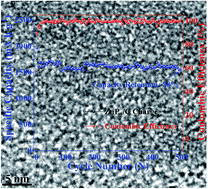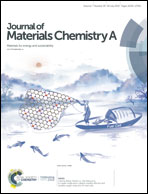An amorphous Zn–P/graphite composite with chemical bonding for ultra-reversible lithium storage†
Abstract
Finding low-cost and large-capacity anode materials to replace the commercially available graphite is an urgent need to meet the ever-increasing demand for high energy density Li-ion batteries (LIBs). Due to their suitable working potential, high theoretical capacity and low polarization, phosphides have attracted increasing interest as promising anode candidates for LIBs. However, phosphides suffer from large volume variation and low ionic and electronic conductivity, limiting the long-term cycling stability and rate capability. Herein, we report ZnP2/C derived from alfa-ZnP2 (tetragonal) and graphite as a highly reversible anode for LIBs. Alfa-ZnP2 (tetragonal) has been found to more easily form an amorphous composite with graphite with P–C bonds compared to Zn3P2. The amorphous structure could dramatically reduce the risk of fracture during cycling, profiting from an isotropic stress and the P–C bonds could enhance the Li-ion and electron transfer capability. Therefore, the ZnP2/C composite demonstrates significantly attractive performance in terms of reaction kinetics, energy efficiency and cycling stability with a specific capacity of 1270 mA h g−1 after 2730 cycles, making it superior to other Zn–P compounds and even other transition metal phosphide anodes. The highly reversible lithium storage capability of the ZnP2/C composite can be mainly attributed to the pseudocapacitive contribution. Additionally, the Li-ion full cell LiCoO2//ZnP2/C delivers 1200 mA h g−1 even after 200 cycles with an average working potential of 3.5 V, demonstrating its potential for application in next-generation Li-ion batteries. Broadly, this work would open an avenue for selecting appropriate phases and designing structural engineering with new chemical bonds to achieve ultralong cycling stability and ultrahigh rate performance.



 Please wait while we load your content...
Please wait while we load your content...